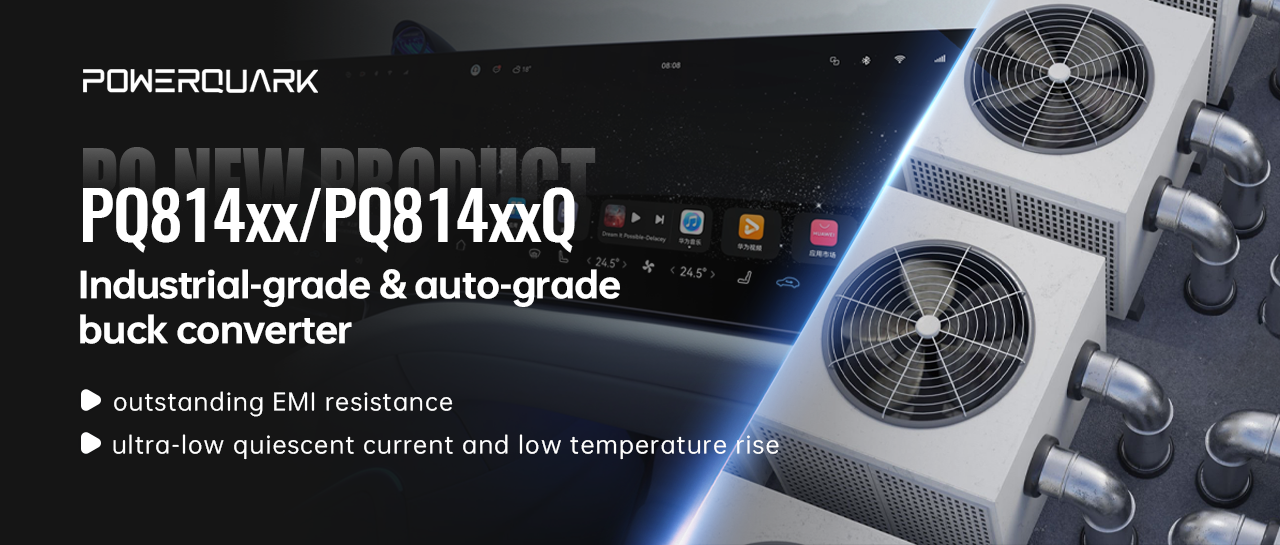Multiple Approaches to Reduce System EMI Interference
DC-DC converters are common sources of EMI in power systems. Due to their typically high switching frequencies, the high-frequency current changes (di/dt) in the input loop during the chip's switching process and the voltage transients (dv/dt) at the switch node can both cause significant EMI throughout the system. To help engineers simplify their design challenges, PQ814xx series integrates several EMI reduction methods. Without the need for additional external circuits or expensive EMI protection devices, it can significantly enhance system EMI performance.
PQ814xx series incorporates spread-spectrum technology, which allows harmonics of different base frequencies to be evenly distributed, dispersing noise energy and effectively reducing peak EMI. In terms of packaging, PQ814xx adopts symmetrical input and output pins and a QFN package. This makes the current loops of the input and output more compact, reducing the loop area and thereby minimizing EMI caused by loop parasitic inductance. Additionally, PQ814xx can adjust the offset frequency of the switch node through RBOOT to avoid excessive EMI peaks due to resonance effects at certain specific frequencies.
In automotive-grade products, these features enable the system to pass the CISPR 25 Class 5 standard without the use of common-mode chokes, helping customers reduce system size while ensuring reliability.
Higher Efficiency and Greater Flexibility
PQ814xx series was designed from the outset to meet the requirements of low quiescent power consumption and low temperature rise. The chips support a wide input voltage range of 3V to 36V, with a maximum withstand voltage of up to 42V. They provide efficient output current and fast loop feedback with current mode control. The quiescent current is as low as 38μA, and in sleep mode, it is as low as 2.5μA, reducing the current consumed by the system in standby mode. The peak efficiency can reach over 96%, effectively minimizing energy loss due to system temperature rise. The product also features a thermal pad design. For applications with input currents above 2A, the temperature rise can be reduced by about 30°C.
PQ814xx offers a great deal of flexibility to users. It is available in fixed frequency versions of 400kHz/2100kHz and an adjustable frequency version ranging from 200kHz to 2.2MHz, with support for external clock. The product provides an efficient PFM mode, and users who wish to reduce output ripple can opt for the FPWM mode. In terms of circuit protection, PQ814xx supports various mechanisms to ensure system robustness, including overcurrent protection, overvoltage protection, thermal shutdown protection, cycle-by-cycle current limiting, and hiccup short-circuit protection.
The automotive-grade version, PQ814xxQ, has passed the AEC-Q100 standard with an operating junction temperature range of -40°C to 150°C.
Conclusion
The newly launched PQ814xx series provides customers with more buck converter options. It helps engineers quickly bring new products to market in EMI-sensitive scenarios. Its ultra-wide input voltage range and rich output current support also make it highly versatile for a wide range of applications.
